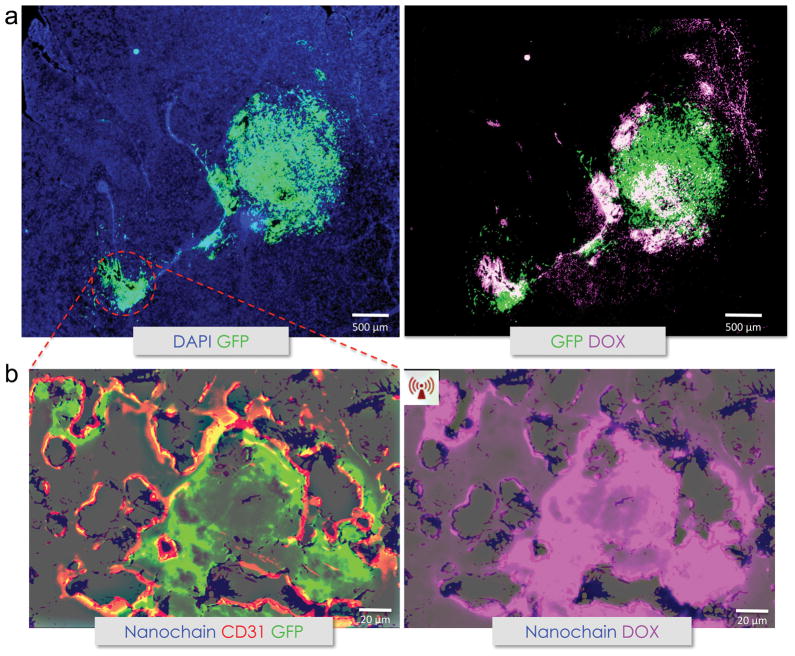Figure 4.
Histologic evaluation of the nanochain treatment. A, histological evaluation of the anticancer effect of nanochains was performed in the orthotopic CNS-1 model in mice [magnification, x5; green, CNS-1 glioma cells (GFP); blue, nuclear stain (DAPI); violet, doxorubicin]. Fluorescence imaging of an entire histologic section of the brain shows the primary tumor and its invasive sites (left). Fluorescence imaging of the same histologic section shows the widespread distribution of doxorubicin molecules after a 60-min application of RF (right). B, higher magnification imaging (x20) of an invasive site shows the location of nanochains (blue) with respect to the location of endothelial cells (green, CD 31) and brain tumor cells (left), and the RF-triggered release of doxorubicin (right) in the same histologic section. Nanochains were visualized by staining iron with Prussian blue. The distribution of doxorubicin molecules is shown with (C) or without (D) RF with respect to the location of cancer cells. DOX, doxorubicin. (reprinted with permission after partial modifications from ref. 12)

